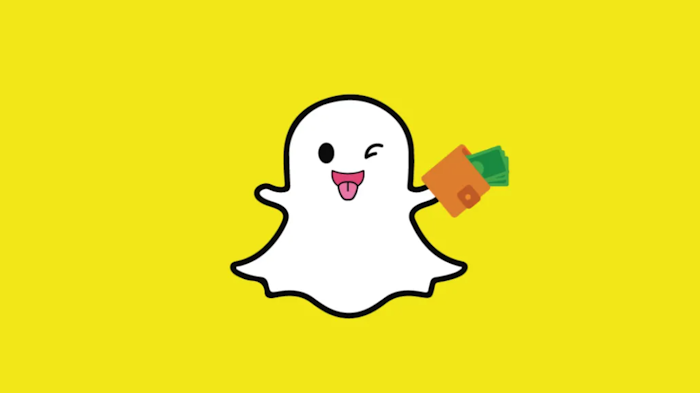TikTok Trends for DTC Brands in 2025: What’s Driving Growth
TikTok isn’t just shaping culture—it’s shaping which DTC brands scale and which stall out.
In today’s feed-first economy, attention is currency—and trend fluency is your creative edge. The best-performing brands in 2025 aren’t chasing hashtags or over-indexing on luck. They’re moving with precision, powered by creative systems that adapt in real time to what’s actually working in the algorithm.
Our 2025 Disruptor Playbook breaks it down: winning DTC teams are combining fast-cycle content testing with flexible brand storytelling to meet trends without compromising brand voice (Slide 34). They’re not guessing—they’re building infrastructure to catch momentum when it hits.
Below, we’ve broken down what’s actually working on TikTok right now—five trend-driven creative frameworks your team can test, remix, and scale.
Lo-Fi Luxury
Lo-Fi Luxury is a content trend that glamorizes the mundane—taking simple, everyday moments and infusing them with an aspirational, calming, or elevated aesthetic. It typically features slow, cinematic visuals, tactile close-ups, and a muted, dreamy vibe. Think: morning matcha routines, satin pillowcases catching the light, or a luxurious skincare moment filmed in natural lighting.
Why It Works
Lo-Fi Luxury taps into a growing desire for calm, control, and mindfulness in a chaotic digital world. For Gen Z and Millennial consumers—especially those overwhelmed by hustle culture—this trend offers a visual escape. It performs well because it elicits a sensory response (calm, pleasure, familiarity) and reframes products as self-care tools rather than just things to buy.
Additionally, TikTok’s algorithm favors watch time and rewatchability—and Lo-Fi Luxury’s relaxing loops encourage users to stay longer, boosting visibility and engagement.
How DTC Brands Can Use It
This trend is a natural fit for brands in the beauty, wellness, CPG, home, and fashion spaces. The key is to integrate your product seamlessly into a quiet moment of indulgence.
Examples of executions:
A DTC candle brand showing slow-motion wax melts and gentle lighting in a cozy evening routine
A skincare brand capturing the sound of a cleanser foaming and water splashing in natural daylight
A wellness tea brand documenting the steam rising from a glass mug at 7 a.m., paired with a handwritten journal
It’s less about selling and more about aesthetic storytelling that positions your brand as an enabler of small joys.
Hyper-Real POVs
Hyper-Real POVs are first-person skits that mimic everyday interactions—like getting a pep talk from your best friend, chatting with your esthetician, or ordering your go-to coffee. These videos put the viewer directly in the scene, using direct eye contact and relatable dialogue to create emotional immediacy. The tone is casual, imperfect, and deeply familiar—like FaceTiming someone you actually know.
Why It Works
These POVs perform because they feel personal, not performative. They tap into shared experiences and social dynamics that are instantly recognizable, making the content feel more like a conversation than a campaign. For younger consumers, especially Gen Z, this builds trust faster than highly produced brand content.
POVs also drive higher completion rates and comments because they invite viewers into the story. And by mimicking everyday roles, they create space for humor, empathy, and even subtle education—all while keeping the product central.
How DTC Brands Can Use It
This trend is ideal for consumer brands looking to humanize their tone or demo their product in real-life context. Rather than pushing a direct CTA, these videos show the product being used, recommended, or anthropomorphized in a natural way.
Examples of executions:
A skincare brand simulating an esthetician visit: “Let’s talk about why your skin’s breaking out… and why this serum’s about to change everything.”
A vitamin brand where the product becomes a supportive BFF: “I’m your daily ritual. You ghost me again, and we’re gonna have words.”
A coffee brand playing out a chaotic 8 a.m. barista interaction, ending with their blend as the solution to everything.
By centering a voice, persona, or interaction, DTC brands can drive both entertainment and product education—without needing high production or influencer casting.
Remix Economy
The Remix Economy is all about co-creation over consumption. It taps into TikTok’s participatory DNA, encouraging users to personalize, reinterpret, or build upon a brand’s original content. Whether it’s a product “hack,” a dupe test, or a creative twist on how something is used, this trend invites the audience to become collaborators—not just customers.
It’s not just UGC—it’s interactive storytelling.
Why It Works
Remixable content activates two powerful TikTok dynamics: creativity and virality. When people see a format they can easily copy, stitch, or improve on, they’re more likely to engage. This fuels the algorithm’s favorite signals: watch time, shares, and saves.
It also builds community. Instead of pushing a one-way message, brands hand the mic to their audience—unlocking authenticity, relatability, and scale. Plus, seeing real people use or interpret your product in unexpected ways often sparks new purchase intent.
How DTC Brands Can Use It
This trend is especially effective for brands that want to showcase versatility, encourage community participation, or inject novelty into their marketing.
Examples of executions:
A beauty brand showing “3 unexpected ways to use our highlighter”—on cheeks, eyelids, and collarbones—then prompting followers to duet with their own takes
A beverage brand launching a “remix our drink” challenge, inviting users to share their own cocktail/mocktail creations using the product
A kitchenware brand stitching creator videos that show unconventional uses for their best-selling pan (e.g., baking cookies, not just sautéing)
By making your product feel like a starting point, not a finished message, you increase the odds of virality and brand love.
Mini-Dramas
Mini-Dramas are short, story-driven skits designed to entertain first—sell second. They unfold like a scene from a sitcom, rom-com, or thriller, often with a plot twist, exaggerated characters, or a surprise ending. The product may not appear until the final punchline, but when it does, it hits.
The goal? To make the viewer forget they’re watching branded content until they’re already hooked.
Why It Works
TikTok rewards narrative tension. When there’s a setup, a conflict, and a twist, users stick around to see what happens—driving higher watch times and engagement. Mini-Dramas also tap into the platform’s love for humor, irony, and hyperbole, making them ripe for commenting, sharing, and remixes.
This format is particularly powerful for DTC brands with problem-solving products, as it lets you dramatize the customer pain point in a way that’s exaggerated, relatable, and funny.
How DTC Brands Can Use It
Think of your customer’s biggest frustration or fantasy. Now build a mini story around it—something they’d watch even if your product wasn’t in it (but is).
Examples of executions:
A skincare brand doing a “day in the life of a breakout” where a pimple acts like a clingy ex who won’t leave—until the brand’s spot treatment shows up
A meal kit brand dramatizing the moment when a tired parent realizes they forgot dinner… and a box magically appears at their doorstep
A haircare brand spoofing a courtroom drama where frizz is on trial, and the product is the surprise star witness
When done right, Mini-Dramas entertain, explain, and convert—all in under 60 seconds.
ASMR + Oddly Satisfying
This trend leans into the sensory sweet spot—where visuals, sounds, and textures collide to create instant gratification. From fizzing skincare to the crisp crack of a beverage can, ASMR and oddly satisfying content puts the product experience front and center, often without a single word spoken.
It’s less about storytelling and more about triggering a visceral, sensory response.
Why It Works
ASMR-style content taps into a universal human instinct: we’re wired to pay attention to soothing, rhythmic, and tactile experiences. TikTok users often stop scrolling when something “feels good” to watch or hear. And with auto-play audio and short-form looping, sensory videos rack up replay value—boosting visibility and engagement.
It also transcends language, making it a versatile format for global audiences.
How DTC Brands Can Use It
Any product with texture, sound, or motion can shine here. The trick is to highlight one sensory element and let it carry the video. No voiceover. No fast cuts. Just raw product appeal.
Examples of executions:
A skincare brand zooming in on a clay mask being scooped, applied, and washed off with a soft splash
A beverage brand focusing on the can crack, pour over ice, and effervescent fizz—all captured with a high-quality mic
A luxury goods brand unboxing their product with slow-motion fabric pulls, magnetic clasps, and soft crinkles
Done well, this trend makes people feel something—which is rare and memorable in a fast-paced feed.
TikTok Moves Fast. Great Brands Move Smarter.
Trends on TikTok may shift weekly, but the brands that win don’t chase every format—they build systems that let them spot what matters, test what performs, and scale what sticks.
The five frameworks outlined here—Lo-Fi Luxury, Hyper-Real POVs, Remix Economy, Mini-Dramas, and ASMR + Oddly Satisfying—aren’t just fleeting creative styles. They’re repeatable plays your DTC team can plug into real growth cycles across launch calendars, promo pushes, and evergreen content streams.
👉 Want more examples, sound pairings, and strategic use cases? Read the full June TikTok Trend Report here.
👉 And for a deeper dive into how modern DTC brands are building high-velocity creative infrastructures, trend playbooks, and content testing systems that actually drive scale: Download the 2025 Disruptor Growth Playbook.




